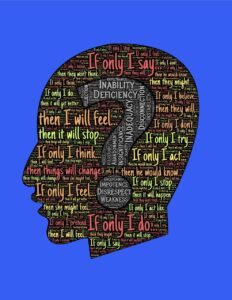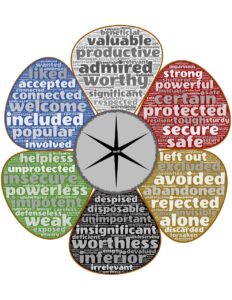TL;DR:
– Nonverbal communication encompasses body language, facial expressions, and proxemics.
– It significantly impacts relationships by influencing understanding and emotional connection.
– Analyzing nonverbal cues involves techniques, avoiding mistakes, and considering cultural differences.
– Challenges in interpretation include subtleties, personal bias, and misunderstandings due to cultural diversity.
– To enhance nonverbal skills, focus on improving body language, facial expressions, and spatial awareness.
Introduction
Nonverbal Communication is an unsung hero, often underestimated, in building successful relationships. It holds the raw power to speak volumes even when our words fail to express. As an experienced relationships advisor and wellness coach, I’ve seen the transformational impact of mastering the art of nonverbal cues on relationships. In this blog post, we’ll delve into five power-packed tips that can level-up your communication game, providing the sturdy foundation needed for healthier, more fulfilling relationships. Let’s dive in, shall we?
Understanding the Power of Nonverbal Communication in Relationships
Did you know that up to 93% of communication is nonverbal? This astonishing fact proves the significance of nonverbal communication in our daily interactions, particularly in relationships.
One of the primary challenges people face in relationships is effectively conveying their thoughts, feelings, and needs. Interestingly, the solution to this problem may lie in understanding and harnessing the power of nonverbal communication.
The Role of Nonverbal Cues in Relationships
Nonverbal cues include body language, facial expressions, gestures, touch, and even silence. Studies show these cues play a pivotal role in relationships, heavily influencing perceptions and reactions.
For instance, a simple smile can convey warmth and approval, while crossed arms might indicate defensiveness. Understanding these signals can greatly enhance communication. It helps us to decipher hidden emotions, unspoken desires, and helps create a deeper bond with our partner.
Improving Nonverbal Communication for Relationship Success
Effective nonverbal communication is no less than a superpower in relationships. You can improve your nonverbal communication by:
- Paying attention to your own nonverbal cues
- Observing others’ nonverbal signals
- Practicing empathy and emotional intelligence
- Improving body language awareness
This isn’t about learning a secret code, it’s about gaining a deeper understanding of human nature. And this isn’t just theoretical advice – models like the Nonverbal Group’s have been shown to significantly improve relationship communication.
Nonverbal communication might seem complex, but with some practice, it becomes an intuitive part of our interpersonal dynamics. Utilizing it effectively can dramatically improve relationships, offering profound self-improvement opportunities. VeryWellMind has in-depth resources on understanding different aspects of nonverbal communication.
Remember, it’s not just what you say, it’s how you say it. The power of nonverbal communication cannot be overstated – hence, it’s a crucial skill worth finessing.
Unlocking the Power of Nonverbal Communication in Relationships
Did you know that human communication is only 7% verbal and a staggering 93% nonverbal? When it comes to interpersonal relationships, understanding and effectively responding to nonverbal cues is just as important, if not more so, than what is explicitly spoken.
The Art of Nonverbal Communication
Nonverbal communication consists of gestures, facial expressions, body language, and even tone of voice—all of these play a significant role in conveying our feelings and intentions. A simple nod, a raised eyebrow, or a softening of the voice can sometimes convey more meaning than a full sentence. However, the complexity arises from the subjectivity of interpretation. What might be a casual gesture for one can be an intense emotional display for another person.
Overcoming the Nonverbal Communication Barriers
The key challenge in nonverbal communication is ensuring accurate interpretation and appropriate response. Acting based on misinterpretations can breed misunderstanding and conflict in relationships. Thus, the solution lies in gaining a better understanding of common nonverbal cues and the contexts in which they occur. Remember, the keyword here is “nonverbal communication”- it’s about listening with your eyes and responding with your own body language.
Informative core
- Learn to pay attention to the nonverbal cues of others, but also be mindful of your own.
- Try to establish a baseline of someone’s typical body language to help spot significant deviations.
- Context is key. The same gesture could mean entirely different things in different situations.
This enlightening article on nonverbal communication can provide you with some more insights.
Applying these strategies can significantly improve the quality of your interpersonal relationships. With practice, you will become more perceptive, empathetic, and effective in communicating nonverbally. Want to become a master at nonverbal communication? Check out this comprehensive course offered by Coursera.
Understanding the Role of Nonverbal Communication in Relationships
Did you know that over 90% of our daily communication happens nonverbally? Nonverbal communication, a silent yet powerful form of human interaction, plays a pivotal role in our relationships.
Many relationship issues come from misunderstandings and misinterpretations in nonverbal cues. So, it’s essential to learn how to read and interpret these signals for effective and healthy communication in relationships.
The Problem: Misreads and Misinterpretations
Herein lies the challenge: despite the prevalence of nonverbal cues in our communication, many people misread or misinterpret these signals. Often, we focus so intently on what’s being said that we overlook the vital meanings conveyed through body language, facial expressions, and tone of voice.
The Solution: Develop Your Nonverbal Communication Skills
Improving your nonverbal communication skills can significantly enhance your relationships. Understanding body language, eye contact, posture, and other nonverbal cues can help you connect deeper and communicate more effectively with your partner.
The Informative Core
Here are a few tips to enhance your nonverbal communication skills:
- Pay attention to facial expressions: These are the first channels of nonverbal communication. A smile, a frown, raised eyebrows—all convey a wealth of information.
- Pay attention to body language: Body language can reveal feelings and attitudes. For instance, open body language indicates warmth and receptiveness, while closed body language may signify discomfort or withdrawal.
- Understand the importance of eye contact: Maintaining eye contact indicates attentiveness and sincerity, making the speaker feel heard and valued.
External Sources:
For an in-depth analysis on how our brain processes nonverbal cues, check out this comprehensive article from Psychology Today. And for practical ways to improve your nonverbal communication skills, this post from SkillsYouNeed is a great resource.
Understanding the Importance of Nonverbal Communication
Have you ever considered the impact of nonverbal cues in your relationships? Nonverbal-communication plays a vital role in how we understand and connect with others.
The problem most people face is failing to recognize and interpret these silent signals correctly. The solution lies in enhancing your awareness of nonverbal cues and using them effectively to improve your relationships.
The Role of Nonverbal Cues
Nonverbal cues complement verbal messages, helping to reinforce what’s being said. For instance, maintaining eye contact while speaking shows that you’re focused and attentive. Through these silent signals, we can build deeper connections.
- Eye contact: signifies attention and interest
- Facial expressions: express emotions
- Body language: reveals attitudes and feelings
The Impact on Relationships
Understanding nonverbal-communication can enhance your relationships, making interactions more authentic and meaningful. For example, recognizing a partner’s subtle signs of discomfort can allow an opportunity for open communication and problem-solving.
Optimizing your nonverbal-communication skills can make you a better listener, a more effective communicator, and can greatly contribute to the success of your relationships. You can find more insights about this in this article from Psychology Today.
Remember, improving your nonverbal-communication skills takes time, so don’t get discouraged if you don’t master it immediately. Keep practicing, and you’ll gradually become more adept at reading and using nonverbal cues to enhance your interpersonal relationships.
Lastly, it’s important to remember that everyone’s nonverbal cues can vary based on their cultural, personal, and situational contexts. You can learn more about this from this detailed guide from Verywell Mind.
Remember, understanding and effectively using nonverbal communication is a tool for well-being and self-improvement.
The Power of Nonverbal Communication in Relationships
Ever wondered why your partner seems upset even when they say they’re fine? This confusion often roots in understanding nonverbal-communication, a crucial aspect of any relationship. Research indicates that more than 60% of all communication is nonverbal, thus highlighting its importance.
Understanding the Basics of Nonverbal Communication
Nonverbal communication transcends the spoken or written word – it’s about gestures, facial expressions, body language, and even silence. By understanding these subtle cues, you unravel the feelings and thoughts unsaid, thereby improving relationship quality.
Nonverbal Communication as a Tool for Conflict Resolution
In the face of disagreement, words can often fuel the fire, while nonverbal cues can deescalate the situation. For instance, maintaining eye contact, nodding in understanding, or a comforting touch can reassure the other person of your intent and understanding, even in disagreement.
Enhancing Intimacy Through Nonverbal Communication
Nonverbal cues can also enhance intimacy levels. Simple acts like holding hands, a loving glance, or a surprise hug can convey feelings of love better than words.
To effectively use nonverbal communication in your relationships, it is crucial to be aware of your own nonverbal cues and understand that of others. Practice paying more attention to body language, facial expressions, and gestures during your daily interactions for better results.
As this insightful article on Psychology Today emphasizes, nonverbal communication is central to any relationship’s success. Another great resource to learn about nonverbal communication in relationships is Help Guide’s article.
Using nonverbal communication effectively can thus help enhance your understanding, resolve conflicts, and build deeper intimacy levels, thereby improving your relationships significantly.
Conclusion:
In essence, mastering nonverbal communication is key to fostering stronger connections in personal and professional relationships. These 5 powerful tips offer a roadmap to interpret gestures, maintain eye contact, and understand body language nuances. By honing these skills, individuals can enhance their emotional intelligence and build trust effectively. Embracing the subtleties of nonverbal cues allows for deeper, more authentic interactions. Dive into the realm of nonverbal communication to unlock the hidden language of human connection and elevate your relational prowess. Explore more insights on nonverbal communication to enrich your communication toolkit.













